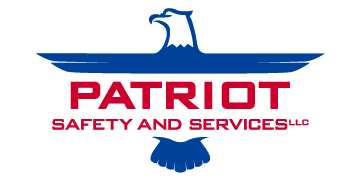When an accident occurs in the workplace—whether it involves a vehicle, heavy machinery, or a slip and fall—employers must respond quickly, thoroughly, and legally. One of the most crucial components of this response is post-accident drug testing. By incorporating post-accident drug testing into workplace safety protocols, businesses can protect employees, comply with federal and state regulations, and identify root causes with greater accuracy.
Post-accident drug testing is not just about determining fault. It is a vital tool for risk management, compliance verification, and long-term prevention. By establishing clear procedures and working with a reliable provider, companies can conduct post-accident drug testing in a way that supports both safety and due process.
The Role of Post-Accident Drug Testing in Compliance
Post-accident drug testing plays a major role in regulatory compliance, especially for companies governed by Department of Transportation (DOT) rules. The Federal Motor Carrier Safety Administration (FMCSA), Federal Railroad Administration (FRA), and other transportation-related agencies all require employers to conduct post-accident drug testing under certain conditions.
These guidelines outline when post-accident drug testing is required, how quickly it must occur, and the documentation needed. Failure to meet these standards can result in penalties, failed audits, or compromised investigations. Employers in both DOT and non-DOT environments use post-accident drug testing to show due diligence and maintain records that stand up to legal scrutiny.
Even for companies not regulated by federal transportation laws, post-accident drug testing is often recommended as part of workplace safety programs and insurance risk control. Many insurers favor employers who include post-accident drug testing in their written policies and practice it consistently.
Understanding When Post-Accident Drug Testing Is Required
Post-accident drug testing is generally performed after any workplace incident that involves injury, property damage, or near-miss events. For DOT-regulated positions, post-accident drug testing becomes mandatory under specific criteria, such as loss of life, citations for moving violations, or disabling damage to vehicles.
In non-DOT settings, post-accident drug testing policies are shaped by internal safety programs and company policy. Employers define what constitutes a test-worthy accident, often guided by OSHA best practices and legal counsel. The objective of post-accident drug testing in these cases is to rule out impairment and ensure a safe return-to-work process.
Timeliness is critical. Post-accident drug testing must be completed as soon as possible, ideally within hours of the incident. Delays can compromise the integrity of results or violate regulatory windows, especially when law enforcement is involved or worker’s compensation claims are filed.
How Post-Accident Drug Testing Protects Employers
From a legal and operational standpoint, post-accident drug testing offers critical protections. When administered correctly, it provides clear evidence that can help determine whether drug or alcohol use contributed to an accident. This evidence supports both internal investigations and external claims processes.
Post-accident drug testing also strengthens defense in potential lawsuits. If an injured employee or third party pursues litigation, having a post-accident drug testing result as part of the documentation provides transparency. It demonstrates that the employer took immediate steps to assess the situation and ensure safety.
Moreover, post-accident drug testing helps mitigate liability for future incidents. If the results indicate substance use, employers can take appropriate action—such as removing the employee from safety-sensitive duties, mandating treatment, or adjusting job responsibilities—to reduce future risk.
The Impact of Post-Accident Drug Testing on Workplace Culture
Post-accident drug testing reinforces a culture of accountability. When employees understand that testing will follow serious incidents, they are more likely to avoid risky behavior. It also fosters trust among staff who want to work in a safe, drug-free environment.
When communicated and implemented with care, post-accident drug testing does not have to be punitive. Many companies use the results of post-accident drug testing as part of broader employee support strategies, including counseling, rehabilitation, and return-to-duty plans.
The existence of a consistent post-accident drug testing policy reassures employees that the employer takes safety seriously and that every individual will be treated fairly under the same rules. This improves morale, reduces ambiguity, and contributes to a more transparent workplace.
Choosing the Right Provider for Post-Accident Drug Testing
Reliability and speed are non-negotiable when selecting a provider for post-accident drug testing. The provider must be able to deploy collectors promptly, follow chain-of-custody procedures, and ensure accurate, timely lab results. Mobile collection capabilities are essential, especially for companies operating in the field, across shifts, or in remote areas.
Patriot Safety and Services offers comprehensive post-accident drug testing solutions with nationwide reach and DOT-compliant protocols. Employers benefit from around-the-clock access to testing services and can trust that every post-accident drug testing event is managed with professionalism, discretion, and legal integrity.
Additionally, Patriot provides documentation, result tracking, and reporting through an easy-to-navigate digital portal, making it easier to maintain audit-ready records. Whether the incident occurs at 3 p.m. or 3 a.m., post-accident drug testing can be initiated immediately.
Integrating Post-Accident Drug Testing Into Safety Programs
To be effective, post-accident drug testing must be part of a larger, well-defined safety program. Employers should create policies that define what qualifies as a testable incident, outline procedures for initiating tests, and explain employee rights and responsibilities.
These policies must be clearly communicated during onboarding and reinforced through regular safety training. All supervisors should be trained to recognize situations that trigger post-accident drug testing and know how to respond appropriately. Having a reliable protocol ensures consistency and protects both employer and employee from misunderstandings or discrimination claims.
Post-accident drug testing policies must also comply with state laws regarding privacy, consent, and employment protections. Employers are encouraged to review their policies regularly to ensure they remain current and enforceable.
Post-Accident Drug Testing and Insurance Considerations
Insurance carriers often evaluate post-accident drug testing protocols when underwriting policies or processing claims. A well-managed post-accident drug testing program demonstrates a proactive approach to risk, which can influence rates and claim outcomes.
After a workplace incident, the results of post-accident drug testing may impact whether a claim is paid or denied. For example, if an injured worker tests positive for a prohibited substance and the employer followed appropriate testing procedures, the insurer may adjust liability accordingly.
Maintaining consistent documentation from post-accident drug testing events also supports appeals, audits, and OSHA investigations. It becomes part of the employer’s risk management portfolio and strengthens relationships with insurance partners.
Responding with Care During Post-Accident Drug Testing
Despite its compliance focus, post-accident drug testing must be handled with sensitivity. Employees involved in accidents may be injured, frightened, or in shock. Employers should approach the process calmly and respectfully, prioritizing immediate medical needs before initiating the testing process.
All testing must be confidential, conducted by trained professionals, and accompanied by proper documentation. Post-accident drug testing should never be used to intimidate or punish, but instead framed as a standard part of the response protocol.
Clear communication and compassion go a long way toward reducing stress and maintaining trust during the post-accident drug testing process. Employers who treat their workers with fairness during difficult moments build stronger teams and healthier workplace cultures.
Conclusion
Post-accident drug testing is one of the most effective tools employers have to protect their workforce and maintain compliance. It provides insight into the cause of workplace incidents, supports regulatory requirements, and strengthens legal defenses. By making post-accident drug testing a standard part of safety response protocols, companies reduce liability, improve accountability, and create safer environments for everyone.
When implemented thoughtfully, post-accident drug testing contributes to a responsible and proactive safety culture. It aligns employer practices with compliance goals and ensures that workplace incidents are addressed thoroughly and fairly. As risk environments evolve, the importance of fast, reliable post-accident drug testing will only continue to grow.

